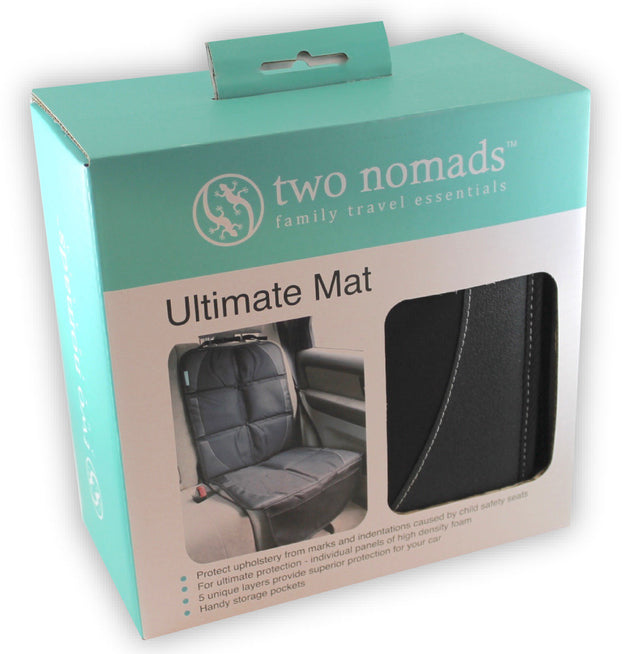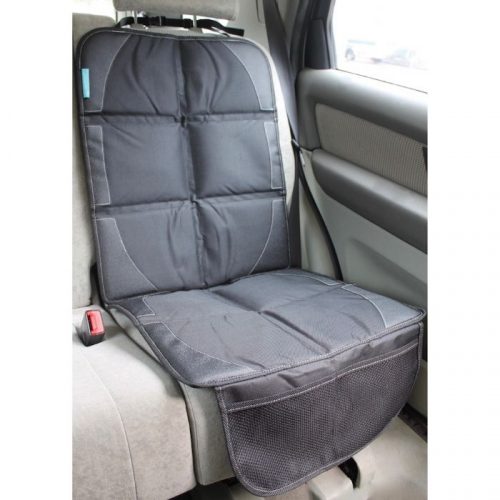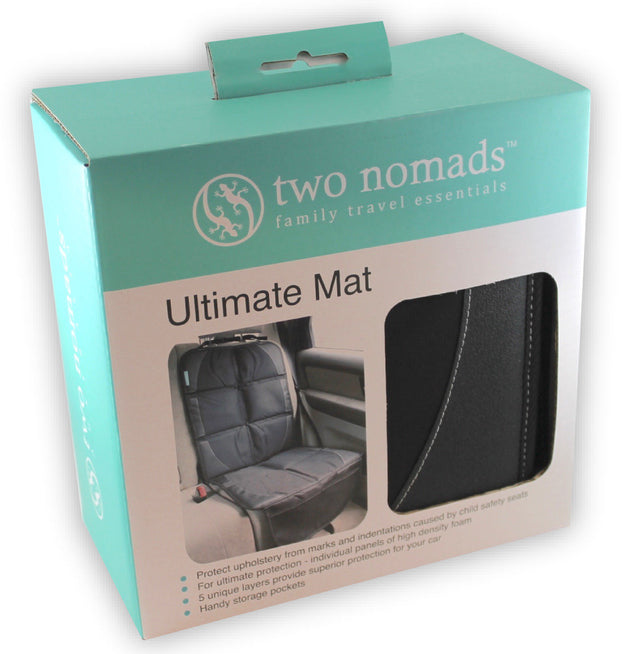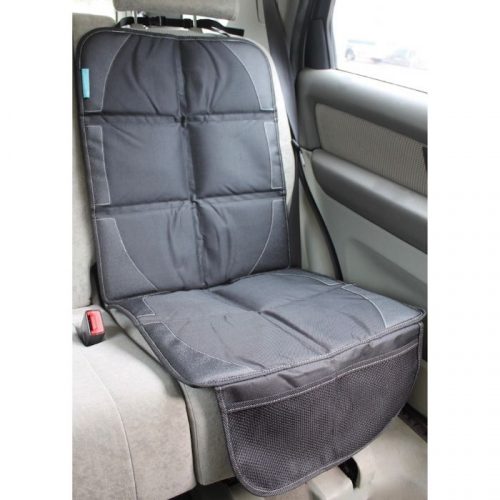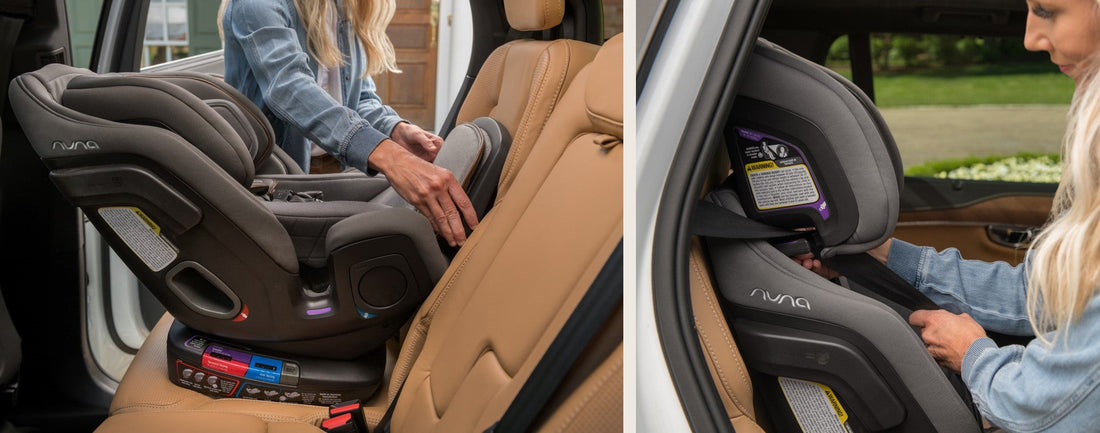Two Nomads Ultimate Mat
Two Nomads Ultimate Mat
SKU:TN001
In stock
Couldn't load pickup availability
Overview
Overview
Two Nomad's Ultimate Mat is used for the ultimate protection of your car's seat using individual panels of high density foam. These mats have been designed to protect upholstery from marks and indentations caused by child car seats.
What's Included
What's Included
Technical Specification
Technical Specification
Delivery and Returns
Delivery and Returns
- Delivery: Free within NZ on orders over $100 (excluding bulky items) or $8 standard shipping
- Returns: Accepted within 14 days of receipt with proof of purchase
- Some items are excluded from returns including sale items, hardware, car seats, prams, monitors and personal items - please click here for the full list.
Share this product
Recently Viewed Products
Related Blogs
Tips & Tricks - Cleaning your Carseat
How to Keep Your Car Seat Clean (and Looking Like New!) Parents and caregivers know that washing can quickly take over your life when you’ve got little ones around – especially when it comes to car seats! Kids, being kids, seem to have a knack for turning a spotless, brand-new car seat into a treasure trove of crumbs, spills, and, well, the occasional bodily fluid. While it would be ideal to ban all food and drink from the car seat (let's face it, that’s easier said than done!), prevention is key. A full-sleeved bib worn over the straps can help catch any messes before they even get the chance to make a mark. If a major mess happens (think: vomit, diaper leaks, or spilled drinks), the sooner you clean it up, the better. In between those big cleans, a quick vacuum once a week can keep things under control and prevent crumbs from piling up. For extra protection, consider using protective car seat covers or mats to catch any messes that could cause long-term damage to your car. Here are some simple steps to keep your car seat looking fresh and clean: 1. Vacuum Your Seat Give your seat a quick shake to loosen any crumbs or debris, then vacuum up the mess before removing the car seat for a deeper clean. This will stop any stray bits from making a mess as you go! 2. Remove and Wash the Car Seat Covers Start by checking your car seat’s instruction manual for cleaning guidelines. Many car seat covers are machine washable, but some may require hand washing. Be sure to note any special instructions about detergent, water temperature, or removable parts. Pro tip: Take a few photos or a video as you remove the covers. This can be a lifesaver when it's time to reassemble! A gentle, mild detergent or just soap and water are typically your best bet. Avoid bleach or harsh chemicals, as these can damage or weaken the fabric. When it comes to drying, line drying is your safest option, as most car seat covers can't go in the dryer. Give them plenty of time to air out and dry completely. 3. Clean the Harness & Straps Use a non-abrasive cloth and warm water to spot clean the harness and straps. Follow your manual’s instructions, as some manufacturers allow using soapy water, while others may not. 4. Clean the Buckles Buckles are critical for keeping your child safe, so avoid submerging them in water or using any lubricants. Instead, spot clean them with warm water and a soft cloth, keeping them free from soap or cleaning products. 5. Clean the Shell Vacuum the car seat shell to catch any loose bits, then use an old toothbrush or cotton bud to get into those tricky nooks and crannies. A damp cloth can help wipe down any sticky or dirty areas. Make sure the shell is fully dry before putting everything back together. 6. Reassemble Your Seat If you took photos or videos while disassembling, now is the time to refer back to them! Check your manual to ensure all parts are correctly reassembled, and give the harness and buckles a final check to ensure they’re securely fitted and ready for your little one. Note: This guide is intended to help with your car seat cleaning routine, but always follow the manufacturer’s specific instructions in your car seat manual to keep your warranty intact.
Learn moreHow to Store a Car Seat Between Children
As parents, we often find ourselves marvelling at how quickly our little ones grow. One day, they're nestled securely in their capsule and before we know it, they're moving on to a convertible car seat. If you're planning to store a capsule for a future sibling, you’ll want to ensure it remains in excellent condition, ready to protect your next bub. One of the main concerns during storage is preventing mould, which can be harmful to your baby's health and damaging to the car seat. Also, be aware that car seats do have an expiration date. Check this before packing the seat away. Here are some storage tips to help keep a capsule clean and mould-free: 1. First Step - Clean Thoroughly Before you even think about storing the car seat, it’s crucial to clean it thoroughly. Mould thrives in dirty, damp environments, so you want to ensure the seat is as clean as possible. Remove Fabric Covers : Start by removing any fabric covers, cushions, and padding that can be taken off. Many of these can be machine-washed. Check the manufacturer’s instructions for your seat. Wipe Down You can spot-clean your harness and straps with warm water and a non-abrasive cloth (ensure you follow your instruction manual for advice as some manufacturers allow the use of soapy warm water). Vacuum Pay close attention to crevices that can accumulate crumbs, sand and dirt. Dry Completely : After washing, make sure that every part of the seat is completely dry before storage. Leaving any moisture behind is an invitation for mould growth. Some drying time in the sun is great as ultraviolet light is a natural disinfectant. Read More about cleaning a car seat here. 2. Choose the Right Storage Environment Where you store the car seat is as important as how you clean it. Cool, Dry Place : The storage area should be cool and dry. Avoid basements, garages, or attics if they’re prone to humidity, which can encourage mould growth. A closet or spare room inside your home, where temperatures are more regulated, is ideal. Elevated Position : Store the car seat off the ground to avoid potential contact with dampness. Packaging : Seal the seat in a plastic bag and then in a cardboard box for protective storage. If you’ve kept the original box the seat came in, that’s ideal. Ensure you have all the pieces together including the manual, any infant inserts and even the car seat adapters for your stroller. However you may want to store the fabric covers separately in the linen cupboard if you have one. 3. Check Periodically It’s a good idea to regularly check on the car seat during storage to make sure there’s no exposure to damp or pests. 4. Pre-Use Inspection Before you use the car seat for your next child, inspect it thoroughly. Check for any signs of damage, mould, or mildew. Give it another clean if necessary, and ensure that all components are still in good working order. Final Thoughts Storing a capsule car seat between children can save you money and reduce waste, but it requires careful cleaning and storage to keep it in top condition. Don’t forget to get it out of storage and do that pre-use check nice and early so you have everything sorted well before the new bub arrives.
Learn moreWelcome to Fatherhood: New Dads and Dads-to-Be
Congratulations, Dad 🤩 First off, huge congratulations! You’re about to embark on one of the most rewarding journeys of your life. Whether you’re a first-time dad or this is round two (or three!), there’s no denying how incredible this experience will be. Sure, it might come with a few sleepless nights and some unknowns along the way, but trust us – it’s going to be amazing.Fatherhood isn’t about being perfect – it’s about being there, learning as you go, and embracing every moment, big or small. You’ll have days filled with firsts, plenty of laughter, and some truly special memories. And remember, it’s okay if you don’t have everything figured out – you’re not alone on this journey. We’ve put together some helpful tips and advice to support you as you navigate these early days, so you can feel confident and prepared. The road ahead is exciting, and you’re going to be a wonderful dad. Let’s get started – you’ve got this! Support During The Pregnancy Journey Pregnancy brings plenty of changes – not just for mums, but for you, too. You might not be the one carrying the baby, but your support can make a huge difference. Here’s how to be the kind of partner your family will thank you for later. Start by learning and getting involved Understanding pregnancy helps you feel more confident and prepared. Check out a few articles, read a few books or dive into an online course for new dads. It can also be incredibly helpful to attend check-ups, which will keep you connected and informed. Ask questions, take in the details, and get to know your baby’s journey. Pick up a few extra chores As the bump grows, so does the to-do list. Take on more housework, drive to appointments, and let your partner rest. Don’t be afraid to ask for help – teamwork makes it easier. Get involved with meals Food might be a bit of a rollercoaster during pregnancy, so try to help where you can – cooking, meal planning, or just making sure there’s something in the fridge that actually sounds good today. And if your partner suddenly needs a very specific brand of ice cream at 9pm… well, that’s your time to shine. Be steady during the ups and downs Hormones can make emotions more intense. Be patient, listen well, and remember: sometimes just being there is enough. Look after your own wellbeing It’s easy to put your own needs on the backburner, but your mental health matters too. Talk openly with your partner, ask lots of questions, and check in with how you’re feeling. A calm, supported dad makes a big difference to the whole family. Think ahead Before baby arrives, research and get organised: Choose and install the car seat (Dimples can help with installation and advice) Set up baby’s space (even if they start in your room). Stock up on nappies, wipes, swaddles, and clothes. Merino is the ultimate in newborn clothing. Learn more about this here Cook and freeze a few meals – thank yourself later! And remember, you don’t need to have it all figured out. Just show up, learn as you go, and be there when it counts. You’ve got this – and feel free to sneak in a dad joke or two (just maybe not at 3am). Now... Baby Has Arrived! 🐣 Bonding with Your Newborn Studies show that active involvement from dads helps with emotional development, cognitive skills, and even reduces stress for both baby and parents. Bonding early on lays the foundation for a strong relationship as your little one grows. Here are a few ways to bond: Skin-to-skin contact: Take a moment to strip down and let your baby lie on your chest. This helps regulate their body temperature and heartbeat, while also releasing oxytocin, the "love hormone," for both of you. Talk and sing: Babies love hearing your voice. Even if you're off-key, read books, sing, or narrate your day ("Time for the big diaper change!"). Your voice will comfort them. Wear your baby: A baby carrier is an easy way to keep your newborn close while you move around. The warmth and motion strengthen your bond, and it gives you some extra dad points. We love this one by Nuna - we stock a few different kinds of carrier. Our store can help you with this if you want to pop in. Support Mum’s Healing The first weeks after birth can be tough for mum. Give her space to heal, and take charge of housework and meal prep. Whether it’s cleaning up, tidying, or letting her nap, your support will help her adjust and feel cared for. Taking Care of Yourself Parenting is a team effort, so don't forget to take care of yourself. Get rest when you can, eat well, and ask for help if you need it. You’ll be much more equipped to care for your little one if you're taking care of your own well-being. Finding Your Routine In the early days, life with a newborn can feel chaotic. Establishing a simple routine will help everyone feel more secure. It doesn’t have to be perfect, but having a basic rhythm for naps, feedings, and bedtime makes things easier as you go. Trusting Your Instincts You might not have all the answers, but trust your instincts. If something doesn’t feel right, speak up. You’ll figure it out along the way – you’re learning every day, and that’s enough. Accepting Help There’s no need to do everything yourself. Accept help when it’s offered – whether it’s a meal from a friend or a family member taking over a diaper change. It’ll make this journey smoother for everyone. Connecting with Each other And Celebrating the Small Wins Parenting is full of big milestones, but it’s the little victories that count too. Celebrate your baby’s first smile, a good night’s sleep, or the first successful outing. These moments are worth appreciating. Parenthood can be all-consuming, but it’s really important to find time for your relationship with your partner. Even simple moments, like enjoying a coffee together, can help you stay connected and grounded amidst the chaos. A Few More Tips Swaddle like a pro: Swaddling can help soothe your baby and improve their sleep. Merino or cotton is the best option. See our range Here Change bag: Keep a change bag handy: Have nappies, wipes, and a spare outfit packed and ready – you never know when you'll need them. Here are a few options for change bags at Dimples. And most importantly: Have fun! Parenting is a learning experience, so embrace it – and don’t forget to build your dad-joke repertoire! Fatherhood is an incredible journey – full of joy, challenges, and unforgettable moments. Dimples is here to support you every step of the way with all the essentials you need to be the best dad you can be. Enjoy every moment, because these early days will fly by ❤️
Learn moreCarseats Standards in New Zealand
Under New Zealand law, the driver is responsible for making sure all children under seven years of age are using a child restraint (car seat) that’s appropriate for their age, size, and development. Keeping your child safe is the number one priority. As a guide, from 0-2yrs, most babies should be in a rear-facing capsule or car seat, from two to around four or five they should be in a front-facing restraint, and after that, they should stay in a booster seat until they’re 148cm tall. Read our full guide to choosing a car seat here New Zealand car seat standards Every car seat that is sold or used in New Zealand has to be manufactured to a standard that complies with our minimum safety standards. You will find the car seat safety standard displayed as a sticker or a label on the shell of your child restraint. This will indicate which safety standard your car seat was manufactured to. When looking at car seats, you may identify a variety of different stickers: 1. The joint Australian, and New Zealand standards. This sticker can be identified as AS/NZS 1754. If you have an Australian standard car seat with this sticker identification it can be bought into New Zealand and used here. 2. The European Standard can be identified by a sticker reading ECE R44/04 or UN R129 and/or i-size. A European standard car seat with a sticker showing these numbers is legal for use within New Zealand. 3. The US standard child restraints can be identified with the code FMVSS 213. Some child restraints that are manufactured to the US standard are approved for use within New Zealand, but it is important to note that not all are. Child restraints that are manufactured to AS/NZ and European standards are independently tested to achieve the certification that allows each car seat to be used within New Zealand. However, car seats that are manufactured to the US standard are self-certified. This is why independent testing of US standard car seats must be run by the certification agency - Bureau Vista - prior to being used here in New Zealand. Once it has been approved for use here, each car seat will have a yellow compliance sticker applied. Note: If you buy a car seat in America, it won’t be compliant for use in NZ. Even if the exact same model can be purchased here, one bought in America won’t have the required compliance sticker and therefore isn’t legal for use in NZ. 4. You won’t often see the Japanese Car Seat Safety Standard here. It is only approved in NZ for child restraints that are built into a vehicle – eg a built-in booster seat that can’t be removed from the car. Note: If the car seat standard sticker falls off, or is no longer able to be read (this could be because a car seat is old and has expired), the restraint is not compliant, and therefore it is not legal for use on our roads. I’m Visiting NZ – Can I bring my own car seat? When visiting New Zealand from overseas you can bring your own child restraint only if it carries either the AS/NZS 1754 or the ECE R44 / R129 safety standard sticker.
Learn more

